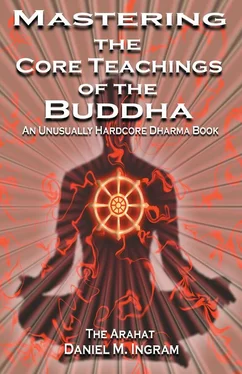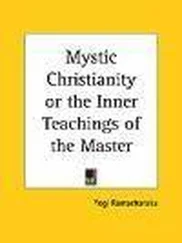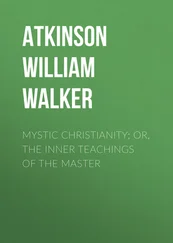Daniel Ingram - Mastering the Core Teachings of Buddha - An Unusually Hardcore Dharma Book
Здесь есть возможность читать онлайн «Daniel Ingram - Mastering the Core Teachings of Buddha - An Unusually Hardcore Dharma Book» весь текст электронной книги совершенно бесплатно (целиком полную версию без сокращений). В некоторых случаях можно слушать аудио, скачать через торрент в формате fb2 и присутствует краткое содержание. Год выпуска: 2009, ISBN: 2009, Издательство: Aeon Books, Жанр: Старинная литература, на русском языке. Описание произведения, (предисловие) а так же отзывы посетителей доступны на портале библиотеки ЛибКат.
- Название:Mastering the Core Teachings of Buddha - An Unusually Hardcore Dharma Book
- Автор:
- Издательство:Aeon Books
- Жанр:
- Год:2009
- ISBN:9781904658405
- Рейтинг книги:5 / 5. Голосов: 1
-
Избранное:Добавить в избранное
- Отзывы:
-
Ваша оценка:
- 100
- 1
- 2
- 3
- 4
- 5
Mastering the Core Teachings of Buddha - An Unusually Hardcore Dharma Book: краткое содержание, описание и аннотация
Предлагаем к чтению аннотацию, описание, краткое содержание или предисловие (зависит от того, что написал сам автор книги «Mastering the Core Teachings of Buddha - An Unusually Hardcore Dharma Book»). Если вы не нашли необходимую информацию о книге — напишите в комментариях, мы постараемся отыскать её.
Mastering the Core Teachings of Buddha - An Unusually Hardcore Dharma Book — читать онлайн бесплатно полную книгу (весь текст) целиком
Ниже представлен текст книги, разбитый по страницам. Система сохранения места последней прочитанной страницы, позволяет с удобством читать онлайн бесплатно книгу «Mastering the Core Teachings of Buddha - An Unusually Hardcore Dharma Book», без необходимости каждый раз заново искать на чём Вы остановились. Поставьте закладку, и сможете в любой момент перейти на страницу, на которой закончили чтение.
Интервал:
Закладка:
Whereas mind-generated objects in the first jhana are stable, they will move (e.g. spin, pulse, resonate, etc.) in the second jhana in ways that correlate with the phase of the breath, moving slowly towards the top and bottom of the breath and more quickly in the middle.
The silence of the mind is noticeably increased, and the pleasure of this state may increase greatly as well, particularly if pleasure is the focus of attention. When this state is really cultivated, the intensity of the pleasure of this state can become pretty much as strong you can stand it.
Again, this state is a fine attainment but can be quite captivating. Some may get stuck cultivating this again and again for some period of time ranging from days to years. Again, the meditator also has the option to try to go on to the third jhana or to investigate this state and begin the 141
The Concentration States (Samatha Jhanas)
progress of insight, paying careful attention to completely deconstructing the state into its moment-to-moment components.
THE THIRD JHANA
If the meditator decides to go on to the third jhana, then just cultivating the second state more deeply and noticing that the rapture or emotional “wow factor” of that state eventually becomes annoying can cause the mind to eventually abandon this state and shift into the third jhana.
In this state, the rapture drops away, and what is left is more cool
“bodily” bliss and equanimity with a lot of mindfulness of what is going on. (It must be noted that it is possible to be so deeply into any jhana, even the first jhana, that the sense of the body is quite vague, distorted or even entirely absent, so this must be kept in mind when reading these descriptions.)
The attention is now in wide focus, sort of like resting in the half of space that is in front of one’s self. The third jhana is like the counterpoint to the focus of attention of the second jhana. In the second jhana, wherever we look we see clearly, whereas in the third jhana the wide periphery of our attention is clear and the center of our attention is murky. This can be extremely confusing until one gets used to it, and trying to stay with one object in the center in the third jhana will cause the meditator to miss what this state has to offer and teach. Moving from the second to the third jhana is like going from focusing on the donut hole to focusing on the outer edge of the donut, except that now you are sitting in the center of the donut. Remember this when you get to descriptions of the Dark Night in the section on the stages of insight, as the Dark Night has as its foundation the third jhana but adds the Three Characteristics. Focusing on the wide periphery is a more inclusive, broader, more sophisticated and complex kind of concentration than the first two jhanas, like going from listening to Elvis to listening to very complex, dissonant Jazz.
In its pure and simple spaciousness, profound clarity, balance and contentment, the third jhana is even better than the second jhana. It is no wonder that people can easily mistake these states for enlightenment, as they can seem to fit the descriptions of what enlightenment might be like. Remember that enlightenment is not a mind state, nor is it 142
The Concentration States (Samatha Jhanas)
dependent on any condition of reality. It does not come and go as these states do.
Again, from this state, the meditator has a few options. They can get stuck, which definitely happens, they can move on to the fourth jhana, or they can investigate this state and begin the progress of insight. This would require extra special attention to make sure that all of the specific sensations that make up peace, equanimity, bliss and spaciousness are clearly observed to arise and pass, not satisfy, and not be self or the property of self.
These qualities are not easy to let go of, and so this can be difficult.
However, upon leaving such a state, the mind will still have a measure of the good qualities of the state. This can be useful to insight practice if one is willing to not cling to such things. This applies to the other states as well, and this is why many teachers have their students master concentration states before they move on to insight practice. On the other hand, such states can be so intoxicating and such a stagnant dead end for those that become fooled by them that some teachers have their students avoid them like the plague until they have some very deep insights into the truth of things.
THE FOURTH JHANA
As before, if the student wishes to go on to the fourth jhana, then they just cultivate the third jhana and begin to pay attention to the fact that even the bodily bliss is somewhat irritating or noisy. Eventually, the mind will abandon the third jhana and shift into the fourth jhana, which is the height of equanimity. This state is remarkable in its simple spaciousness and acceptance. The extreme level of imperturbability would be astounding if there was not such pronounced imperturbability.
This is by far the most restful of the first four jhanas.
The focus of attention is now largely panoramic and thus even saying “focus” here is a bit problematic. In the first jhana the object was finally clear but static and solid that we can stay with. In the second jhana the object begins showing itself and some simple motion is allowed. In the third jhana we go from a spot of attention to a wide circle of attention and the motion gets more complex, so we now have two spatial dimensions and time. In the fourth jhana things get three-dimensional and mind-made objects such as visualizations take on a life 143
The Concentration States (Samatha Jhanas)
of their own, becoming living, luminous and transparent. The fourth jhana includes space and awareness in a way that the previous three do not. Mindfulness is considered to be perfected due to equanimity, though this factor does not stand out as in the third jhana. When we are really in this state, the basic sense we have of where our body is and what it looks like can get very vague or even vanish entirely, though this is less true if we are in this state with our eyes open.
This is quite a high attainment, and can easily be confused with the goal of the spiritual life, though it very much isn’t. From this state the student has quite a number of options. They can get stuck, they can move on to the formless realms, they can cultivate what are described as
“psychic powers,” or they can investigate this state and begin the progress of insight. When investigating this state, special attention must absolutely be given to the fact that the myriad sensations that make up equanimity and spaciousness come and go moment to moment, do not satisfy or provide a permanent resting place, and are not self.
Again, it is easy to get attached to the sensations that make up these high states, and so great precision and attention (as well as honesty) must be given to this if the student chooses this option. Another alternative is to leave this state and then begin insight practice, as the qualities that this state writes on the mind linger for a short time, and this can be helpful if the student does not cling to these benefits.
THE “PSYCHIC POWERS”
As to the “psychic powers” (“siddhis” in Pali), the texts list all kinds of special abilities that may be cultivated using the fourth jhana (or perhaps lower or higher jhanas) as a base, and these are attained today.
These may include all kinds of strange experiences, including full blown and extremely realistic experiences of other realms that can seem quite magical and fall quite in line with what one might think of when one thinks of various “psychic powers.”
Whether or not these are “real” is a question that I am happy to avoid, though these experiences can be so extremely vivid that they can seem more “real” than the “real world.” Much more interesting than the question of what is real is the question of what is causal, i.e. what leads to what. For example, we might decide that our dreams are not
Читать дальшеИнтервал:
Закладка:
Похожие книги на «Mastering the Core Teachings of Buddha - An Unusually Hardcore Dharma Book»
Представляем Вашему вниманию похожие книги на «Mastering the Core Teachings of Buddha - An Unusually Hardcore Dharma Book» списком для выбора. Мы отобрали схожую по названию и смыслу литературу в надежде предоставить читателям больше вариантов отыскать новые, интересные, ещё непрочитанные произведения.
Обсуждение, отзывы о книге «Mastering the Core Teachings of Buddha - An Unusually Hardcore Dharma Book» и просто собственные мнения читателей. Оставьте ваши комментарии, напишите, что Вы думаете о произведении, его смысле или главных героях. Укажите что конкретно понравилось, а что нет, и почему Вы так считаете.












